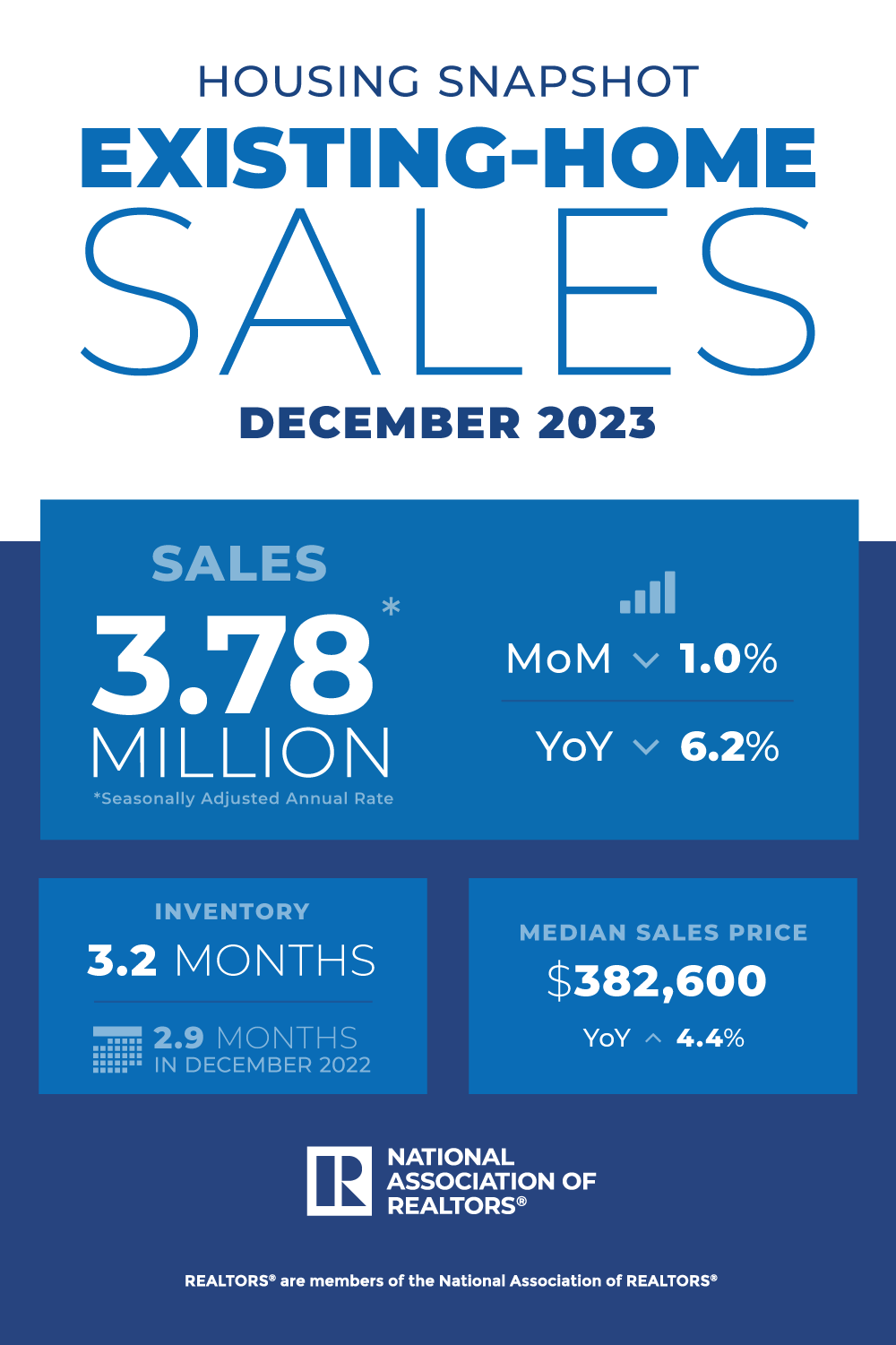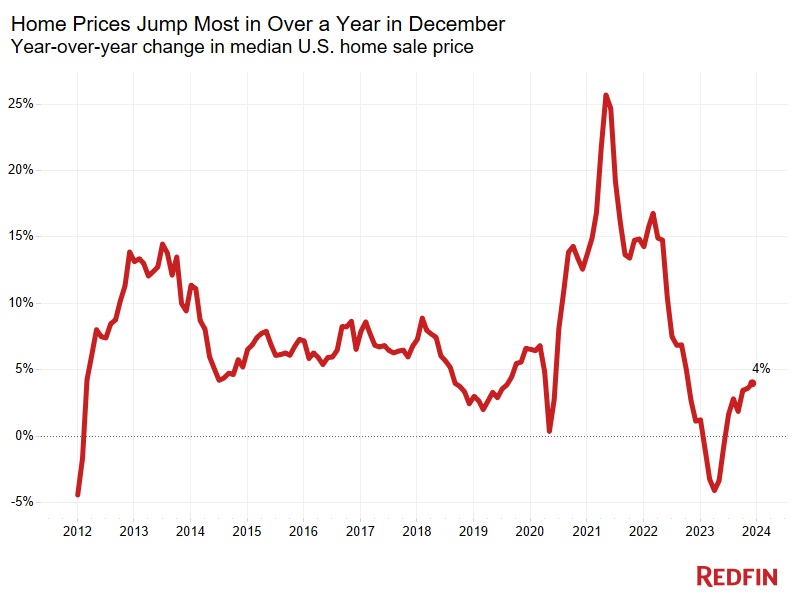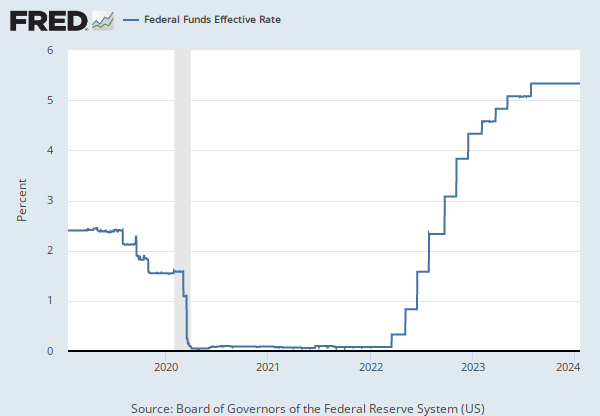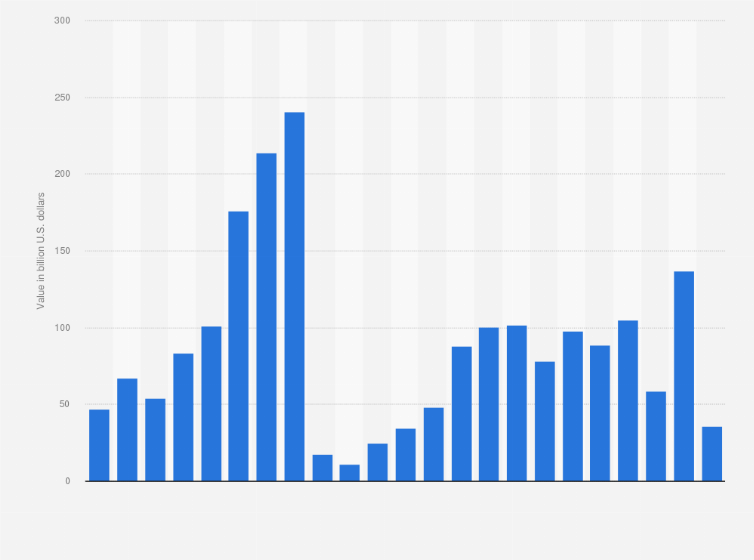December home sales decline, marking the worst year-end since 1995
Plus, Blackstone bets big on residential rentals with Tricon acquisition and Ozempic poses new challenges and opportunities for retail real estate.
WORST DECEMBER HOME SALES SINCE THE CLINTON ADMINISTRATION
The close of 2023 brought with it a sobering reality for the housing market, as December home sales plummeted to levels not seen in decades.
📉 Year-End Slump: The National Association of Realtors reported a 6.2% decrease in December home sales compared to the same month in the previous year, underscoring a challenging period for real estate. This dip contributed to an annual total of 4.09 million units sold in 2023—the lowest since 1995.
🏠 Regional Rundown: Sales dynamics varied across the country, with no change observed in the Northeast but a noticeable 4.3% drop in the Midwest. The South saw a decrease of 2.8%, while the West experienced a surprising rebound with an increase of 7.8%. Year-over-year figures, however, painted a universally bleak picture with declines across all regions.
Mortgage Rate Influence: The tail end of the year reflected transactions likely initiated when mortgage rates were significantly higher—around 8%—which have since decreased to approximately 6.89%. Lawrence Yun, NAR's chief economist, suggests this may represent the trough before an anticipated recovery fueled by lower mortgage rates and increased inventory projections.
📈 Price Resilience Amid Inventory Squeeze: Despite falling sales numbers, housing prices continued their upward trend. With inventory shrinking by 11.5% from November to December yet increasing by 4.2% from the previous year, buyers faced heightened competition for fewer available homes—resulting in a median sale price of $382,600 for December, marking six consecutive months of year-over-year gains.
⌛ Market Pace Shifts: Homes lingered longer on the market than they did in November—an average stay rising from 25 to 29 days—while all-cash purchases made up an increased share at 29%.
☃️Investor Activity Cooling Off?: The real estate market witnessed reduced investor engagement as higher costs led to fewer purchases throughout the full year. This retreat could potentially open doors for first-time buyers who have historically accounted for around 40% of purchases but now trail at just under one-third.
🔮 Looking Forward: With rents stabilizing and more rental properties coming onto the market, investors would-be homeowners are eyeing opportunities amidst shifting conditions that could reshape buyer demographics and investment strategies.
Links of the Day
🧑🏫️Our Picks
Major Acquisition: 💰🏠 In a massive $3.5B deal, Blackstone snatches up Tricon, betting big on rental homes and apartments as the future of urban living.
Inflation Erodes Home Gains: 📉 Despite nominal increases, Zillow's adjusted "real" home values fell for the fourth consecutive month, challenging homeowners' perceptions of market strength.
PNW Property Price Cold Front: 📉 Seattle's once red-hot housing market adjusts to reality with a significant drop in home prices, offering a glimmer of hope for buyers amidst affordability challenges.
Silicon Valley's real estate pivot: 🤖🚗 CBRE taps into AI and electric vehicle boom, hiring industry experts to deal with the growing appetite for innovative research facilities.
Sub-Zero Superstars: 🌬️✨ The cold truth is out - heat pumps are defying doubts by delivering warmth even as thermometers plummet
Loonie Landings: 💸 In Canada’s soaring housing sector, buyers face sky-high prices that make even the infamous US bubble look modest by comparison.
🏭Industrial
Rising from the Ashes: 🔥 Phoenix bucks the national decline with notable growth in industrial occupancy and construction - a beacon for tech industries amidst economic uncertainty.
Denver's Boom: 🏗️ The Mile High City celebrates a robust industrial real estate market as vacancy rates plummet and new projects soar, promising an even stronger 2024.
Storage Space Spike: 📈 Amidst a slight vacancy uptick, South Florida's industrial rents climb, with Miami-Dade leading the charge at $15.50/sq ft.
👪 Multifamily
Ownership Obstacles: 🚧 With experts calling it "the worst time to buy," prospective homeowners confront steep costs and slim pickings, but renters find solace in an influx of new apartments.
Brooklyn Workspace Revolution: 🏢 Brooklyn's waterfront is being transformed with innovative spaces, offering tax benefits and stunning views to modern professionals seeking a closer-to-home work environment.
🏷 Retail
From Pills to Properties:💊GLP-1s like Ozempic not just trimming waistlines but also reshaping retail space utilization - is a healthier tenant mix ahead?
Retail Rethink: 🛍️ With the lowest vacancy rates since '07, shopping centers thrive, yet a cautious 2024 looms as consumer spending shifts towards essentials, signaling a chill in retail demand.
💼 Office
Empty but expensive: 💼📈 NYC offices defy logic with a valuation jump to $173 billion, even as hybrid work empties skyscrapers.
Strategic Shift: ⚙️ In a bold move, Brookfield outsources property management of 85 buildings to CBRE, aiming to streamline operations and enhance focus on portfolio cash flow and sustainability.
💲CRE Finance
Financing freeze: ❄️ Rising interest rates put the squeeze on U.S. commercial property market as banks tighten belts and prices nosedive.
Banking on the Brink: 🏦 Commercial real estate woes raise conduct risk concerns as foreclosure surges and tech investments in risk management soar amid a changing post-COVID-19 landscape.
Looming Crisis in Property Market: 🚨 Cantor Fitzgerald CEO Howard Lutnick warns of an imminent "generational change," with potential for $700 billion to $1 trillion in real estate defaults, reshaping the landscape of ownership and lending.
Market Mood Swings: 😐 Commercial real estate faces fluctuating fortunes as Federal Reserve reports anticipation for rate reductions against a backdrop of persistent deal limitations due to current rates.
🛍Grab Bag
Florida Man Real Estate Scam: 🚨 The FTC cracks down on Orlando's Ganadores, accused of swindling millions from the Hispanic community through a property-flipping scheme. Owners to forfeit $6M and luxury assets in restitution.
Canal Crunch: 🚢 As Panama and Suez face disruptions, CRE braces for impact. Shipping costs soar, potentially triggering cautious Fed moves and sustained high-interest rates.
Equity Exodus: 💸 As sponsors shy away from additional contributions, Mitchell Hunter signals increasing property handovers and potential loan pool sales in the real estate market of 2024.
📊Daily Data Visualization
The commercial real estate landscape, nationwide but particularly in formerly high-flying regions like the SF Bay Area, is on alert as nearly $40 billion in commercial mortgage-backed securities (CMBS) loans approach their maturity dates within the next 18 months.
This debt, which fueled property purchases from 2012 through 2023, now poses a significant challenge to borrowers as interest rates have risen sharply from their pandemic lows.
Interest Rates and Refinancing Hurdles
In response to the pandemic, the Federal Reserve slashed interest rates to near zero to stimulate economic activity. However, with inflation on the rise, we've witnessed a series of rate hikes that have increased borrowing costs significantly.
This chart illustrates this dramatic climb in the federal funds rate:
This uptick in interest rates affects new loans considerably. Previously enjoyed low-interest rates averaging around 5% are now overshadowed by substantially higher current market rates. Consequently, property owners accustomed to predictable borrowing costs face an uncertain future where refinancing at favorable terms is no longer assured.
A Market Under Pressure
The Bay Area real estate market has been under duress due to various factors exacerbated by COVID-19: a slow return to office spaces, difficult street conditions, and overall dampened demand for commercial properties. These issues have led lenders to proceed with caution or even temporarily halt lending activities.
As depicted in our CMBS issuance chart below, there's been a stark decrease in loan origination:
Before the pandemic hit, quarterly loan originations fluctuated between $400 million and $800 million. By Q3 of 2022, this figure plunged to a mere $80 million – mirroring declining building values and investor confidence.
Tough Decisions Ahead for Property Owners
Owners who capitalized on the decade-long boom with optimistic assumptions about ever-rising property values now find themselves at a crossroads. With CMBS loans coming due and revenues faltering, borrowers must consider options that were once unthinkable: seeking extensions with potential capital injections or refinancing at dauntingly high rates.
For instance, One Market Plaza – valued at nearly $1.8 billion in 2016 – recently saw its owners negotiate an extension on a maturing $975 million loan rather than face immediate refinancing under less desirable conditions.
However, not all properties can boast such proactive measures or solid anchor tenants that might ease negotiations for extensions or refinancing terms.
What’s the solution?
Looking ahead into 2024 and beyond presents an environment ripe for financial ingenuity as building owners explore various strategies ranging from "dual-tracking" sales while pursuing fresh loans to potentially opting for discounted payoffs with lenders.
Keep in mind that earlier engagement with advisers and lenders can provide more leeway when devising strategies amidst ongoing interest rate uncertainties. The market appears poised for transformation as some expect it may "start to thaw," hinting at opportunities emerging from these challenging times.
This imminent wave of CMBS debt could trigger both distress and opportunity within the market – compelling some properties into new hands while freeing others from burdensome debts as they adapt to current economic realities.











